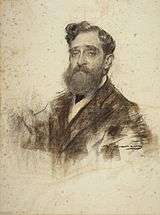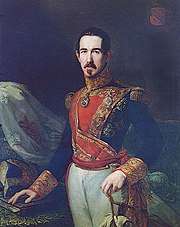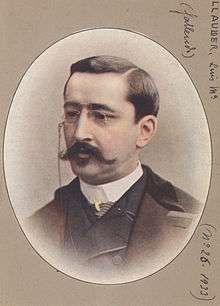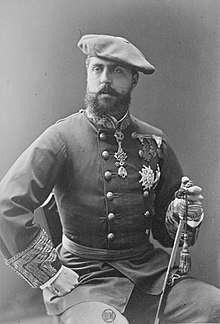Erasmo Janer Gironella
José Erasmo Janer Gironella (1833-1911) was a Spanish entrepreneur and politician. As a businessman he is considered a member of the textile-industry-related Catalan bourgeoisie, which enjoyed peak of its power in the mid-19th century; Janer represented this group during its declining phase. Politically he earned his name as a Carlist and headed the Catalan branch of the party between 1902 and 1910.
Erasmo Janer Gironella | |
|---|---|
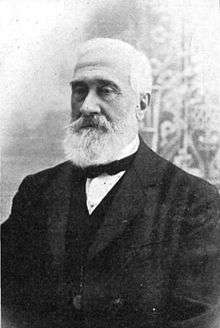 | |
| Born | José Erasmo Janer Gironella 1833 Barcelona, Spain |
| Died | 1911 Barcelona, Spain |
| Nationality | Spanish |
| Known for | politician |
| Political party | Carlism |
Family and youth
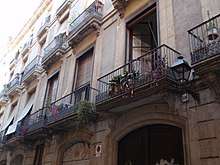
Some scholars consider the Janer family past an illustration of social history in Catalonia, its rise and decline demonstrating patterns of change within the local ruling strata.[1] Erasmo's paternal grandfather Domingo Janer Sunyer (1762-1807) was son to a provincial doctor[2] and commenced his career as a petty merchant from Esparreguera;[3] rising to prosperity, he was ennobled in 1795.[4] He married heiress[5] to an emergent Gónima textile fortune;[6] both died prematurely. Their only son and the future father of Erasmo, Erasmo Janer Gónima (1791-1862), inherited the hugely successful business in 1821; at that time it was crowned with the largest European textile factory which employed some 1,200 workers.[7] Himself representative of a new strata of commerce and industry tycoons which started to surpass landed aristocracy and old urban bourgeoisie,[8] in the mid-19th century Janer Gónima brought the family to business and political climax. Member of executive boards of countless economic organizations,[9] he held key positions in municipal administration, served as alcalde of Barcelona in 1846 and as a provincial deputy in the 1850s.[10] In the mid-19th century he shut down the textile factory[11] and re-focused the family business on finance,[12] railways[13] and commerce.[14]
In 1813 Janer Gónima married Josefa Gironella Ayguals, daughter to another Barcelona textile industry tycoon.[15] The couple had 5[16] or 7[17] children; out of two sons, it was José Erasmo who became heir to the family wealth.[18] At unspecified time though probably in the 1840s he frequented the Piarist college of St. Anthony in Barcelona,[19] to complete education while studying law at Universidad de Barcelona and graduating most likely in the mid-1850s.[20] Gradually getting engaged in running the family business, in 1864 José Erasmo married Dolores Milá de la Roca Vilaseca;[21] her family, also ennobled merchants, became landowners rather than engaged in potentially profitable but risky urban ventures.[22] Basking in inherited opulence the couple settled in the Janer family residence in Barcelona, in the iconic building known as Ca l'Erasme.[23]
José Erasmo and Dolores had 7 children, though only two of them married: the second oldest son[24] and the family heir Ignacio Janer Milá de la Roca became a locally known historian and writer,[25] while Mercedes wed a Carlist politician Dalmacio Iglesias. Another daughter María de los Angeles became a Carlist propagandist.[26] José Erasmo and Dolores had 5 grandchildren;[27] both grandsons were youth Carlist activists during the Second Republic years[28] and requeté volunteers[29] during the Civil War. The older one, Erasmo Janer Duran, was executed by the Republicans;[30] the younger one, Enrique Janer Duran,[31] survived the war to become a lawyer;[32] since the early 1940s till the late 1970s he held various mid-range positions in the Barcelona city council,[33] from secretary of the ayuntamiento[34] to teniente auditor,[35] jefé de sección[36] and head of the transport department.[37] As neither Erasmo nor Enrique had sons,[38] the Janer line has extinguished. The nephews of José Erasmo, José María and Erasme Lasarte Janer, became known in local Catalan realm respectively as a writer and as a painter.
Conservative to Carlist (1864-1876)
As heir to the former mayor of Barcelona and son to one of the most potent men in the city Janer was destined to become a public figure, yet political preferences of his ancestors are not entirely clear. Historians note that as tycoons of new bourgeoisie the Janers and the Gónimas were Liberals,[39] while the Gironellas were even related to the revolutionary exaltado version of Spanish liberalism.[40] One source claims that during the First Carlist War his father joined the liberal Barcelona juntas[41] while another one states that in the mid-1840s he was a Traditionalist,[42] which might point to not an unusual conservative evolution of certain section of the Moderados. One author notes that Janer himself sort of neared Traditionalist outlook during his academic years,[43] yet his first public engagements did not demonstrate such a penchant. In the late 1850s and early 1860s he was noted for engagement in various institutions related to local business, recorded as member of Instituto Agrícola Catalan[44] and an insurance company La Providencia[45] or sitting in the board of Asociación de Socorros y Protección a la Clase Obrera y Jornalera[46] and in Junta de Patronato of his Barcelona borough.[47] One source claims he initially practiced as a lawyer.[48]
In the mid-1860s Janer was first noted running for public office, as propietario and haciendario competing for the concejal post in the Barcelona ayuntamiento;[49] there is no confirmation of his success. It seems that during final years of the Isabelline monarchy he neared the entourage of the then capitán general of Catalonia and the Conservative politician, Juan de la Pezuela; Janer used to address him in public homage letters[50] and was nominated by Pezuela to the last Isabelline city council, where he was sitting as the youngest concejal until the body was dissolved during the 1868 revolution.[51]
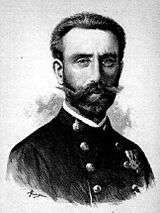
One author claims that Janer passed from Conservative to Carlist position when faced with the revolutionary developments of the late 1860s.[52] Some sources maintain he fielded his candidature in elections to the Constituent Assembly of 1869 and indeed in 1871 he was already reported as nominated by the regional Carlist junta as their representative in the Cortes elections from Sant Feliu de Llobregat,[53] the bid which proved unsuccessful. In 1872 Janer became president of Círculo Católico-Monárquico in Barcelona[54] and entered the provincial party executive, noted as member of the Barcelona Junta Provincial Católico-Monárquica. In the council he was sitting with his father-in-law, Manuel Milá de la Roca,[55] and forged the lifelong friendship with the junta leader and later Catalan Carlist leader, Luis de Llauder y Dalmases. Following outbreak of the Third Carlist War Janer found himself the target of Republican persecutions and had to flee the city a number of times.[56] Eventually with his family[57] he sought exile in France and settled in Saint Jean de Luz.[58] According to one source he joined a small team, led by Tírso de Olazábal and busy procuring arms for the Carlist troops;[59] it is likely that taking advantage of his wealth, Janer contributed financially.[60]
In the second row (1877-1888)
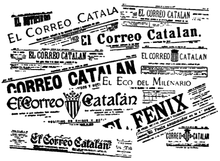
It is not clear whether Janer's massive property was embargoed during the war, whether he suffered any other persecutions and when he returned to Barcelona after the Carlist military defeat. A number of sources point vaguely to the late 1870s when claiming that together with Milá de la Roca and Llauder Janer was among co-founders of a new Carlist daily which would remain in print for the following 60 years, El Correo Catalan.[61] In 1879 he entered the Barcelona ayuntamiento[62] yet duration of his term is not known; except an 1888 spell in Junta Municipal[63] it proved to be a unique Janer's episode in official administration. In the 1880s he was noted rather for looking after his family enterprises, especially in Caja de Ahorros.[64] However, some scholars claim that he demonstrated neither interest nor skills in commercial activities and that during his tenure the family business went into decline;[65] some go as far as to claim that to sustain the Carlist cause he kept selling off his private property[66] or even that he ruined his fortune with the legitimist zeal.[67] Janer was also known for engagement in numerous public initiatives, often flavored with charity: he held executive or presidential positions in Junta de Obra, Junta de la Beneficiencia in his Nuestra Señora del Carmen parish, Real Archicofradía de la Virgén de los Dolores,[68] Junta Local de Salvament de Náufrags[69] and various makeshift committees, e.g. the body assisting victims of the 1885 earthquake in Andalusia.[70]
In the 1880s Carlism did not exist as organized structures present in the Spanish public life; the movement languished as a set of loose quasi-political initiatives flavored with Traditionalist spirit and intransigent religiosity. Part of this strategy was mobilizing support by means of mass pilgrimages; Janer contributed as member of the Barcelona Junta Organizativa branch, which co-ordinated the 1882 romería to Rome.[71] Adhering to the same line he used to sign various public letters denouncing perceived injustice to the Catholics and secular course of the government, e.g. the entire Janer family subscribed to an 1883 document which protested curtailment of Catholic rights;[72] in 1884 he emerged as leader of the Catalan branch of Asociación Católica.[73] Stress on religious features, focus on Traditionalist values and de-emphasizing of dynastical threads was very much the vision of the Carlist political leader Candido Nocedal and later his son Ramón. Janer seemed on perfect terms with both[74] despite the fact that the Nocedalistas, known also as Integrists, were increasingly on collision course with the claimant Don Carlos; as late as in 1886 Janer took part in a homage banquet honoring Ramón Nocedal.[75] However, when in 1888 the Integrists broke away from Carlism to form their own Traditionalist organization Janer decided to stay loyal to his king; in 1889 he was already lambasted by the Integrists as the sidekick of Llauder.[76]
Deputy leader (1889-1901)
Following the Integrist secession Carlism abandoned its quasi-political format of the 1880s and assumed a decisively more active political stance; the nationwide structures started to emerge, initially styled as committees celebrating 1,400 years since the Conversion of Recaredo. In Catalonia the organization was headed by Llauder, yet Janer – together with Manuel de Torrents – was nominated its vice-president, effectively the second-in-command in the regional party infrastructure.[77] However, his contribution to Carlist buildup seems meager. Though Carlist candidates started to take part in electoral campaigns and under the new nationwide leadership of Marqués de Cerralbo the movement took shape of an organized modern political party, there is little information on Janer's public activity in the early 1890s. Despite consolidation and growth of Catalan Carlism under the regional leadership of Llauder, Janer neither stood as candidate in elections nor was recorded as active in supporting electoral campaigns. While de Cerralbo was striving to implement a new formula of mass mobilization[78] Janer seemed attached rather to old-style patterns and at best took part in closed-door party feasts, like the one in 1893.[79] His popular initiatives stuck to the pilgrimage format, e.g. when organizing workers' romería to Rome in 1894[80] or signing homage letter to the papal nuncio; the document protested the governmental secularization policy.[81]
In 1895 Janer was officially confirmed by de Cerralbo as vice-president of the Catalan Carlist organization,[82] yet he still remained in the shadow of Llauder. He was barely mentioned when new party círculos in the region were being opened, typically noted when presiding over official banquets[83] or entertaining royal Carlist figures, e.g. the second wife of the claimant Berthe do Rohan, who visited Barcelona in 1896.[84] Though historiographic studies either on Catalan[85] or nationwide Carlism[86] of the 1890s barely mention his name, de Cerralbo was apparently satisfied with Janer's contribution to the cause; Jefe Delegado addressed him with effusive letters of gratitude and thanked him for electoral efforts;[87] press of the era provides little evidence of such support.[88] Actually, it seems that in the late 1890s the Catalan Carlism was vibrant yet increasingly leaderless and disorganized. Since 1898 due to his poor health Llauder's leadership became largely theoretical, while the movement was plagued by personal squabbles, emerging social radicalism, urban pistolerismo, Catalanist sympathies and insurrectional currents. None of the sources consulted mentions Janer when discussing the local 1899-1900 Carlist revolts in Catalonia.[89] The press noted that in the very first years of the 20th century the Catalan Carlism was led by 3 competitive juntas: 1) the old one headed by Llauder, 2) the new one appointed by recently nominated Jefe Delegado Matiás Barrio and headed by Duque de Solferino, and 3) the one associated with general Moore, headed by Janer;[90] this claim is not confirmed by other sources. Following the death of Llauder and despite rumors pointing to Solferino, following Janer's visit to Don Carlos' residence in Venice[91] in 1902 the claimant nominated him the new Catalan leader.[92]
Jefe (1902-1910)

Janer's tenure fell on a period when Catalan Carlism was challenged by massive social and political change, the decade which shifted the region's centre of gravity from rural traditional hinterland to the coastal strip, dominated by new urban classes. The rising Catalanist and anti-establishment tide gave rise to Solidaridad Catalana; on the one hand the Carlists were attracted by its opposition to the Restoration regime, on the other they were estranged by Republican, nationalist and secularist features of the alliance. Janer, who in 1903-1905 limited himself to making appointments[93] and presiding over party feasts,[94] in 1906 gave in to the pressure of pro-Solidaridad Carlists like Solferino and Junyent and permitted access to the pact. His key concern was that only authorized individuals were allowed to stand on joint electoral lists[95] and that the move did not go beyond a temporary tactical cooperation.[96] Faced with anti-Solidaridad opposition in the party ranks[97] he enforced discipline[98] yet it seems he kept vacillating himself.[99] Carlist access was rewarded with great success in the 1907 elections[100] but it seems that Janer had few regrets when the alliance fell apart in 1908, even though debates persisted until 1909.[101]
Another problem Janer had to face as a regional leader was the insurrectional tide, rising among the Catalan Carlists. Though the 1900 preparations boiled down to few isolated attempts some sections of the party kept gearing up for a violent overthrow of the regime. Janer called for discipline and tried to marginalize the radicals;[102] when in 1906 they staged a local revolt in Martorell, easily crushed by the government forces, Janer first disauthorised the action[103] and then expulsed the insurrectionists from the party,[104] again in full agreement with the claimant.[105] However, the dissent was mounting, fuelled also by personal squabbles and issues related to tactical alliances with the Alfonsists; to enforce discipline at times Janer opted for dissolution of municipal[106] or even provincial party jefaturas.[107] A few local party heavyweights like Tamarít grumbled against Janer and some, like Solferino, resigned in protest.[108]
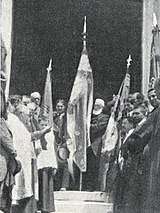
Janer seemed overwhelmed by problems and apparent decomposition of the party in Catalonia; he first tried to step down in 1906, but his resignation was not accepted by the claimant;[109] in 1908 he again handed over his resignation, also to no avail.[110] Contemporary press noted that Janer was a great Christian, grand citizen and by all means an extraordinary person, but neither a good leader nor an impressive politician, tending to inactivity and with scarce faith in the cause.[111] He is not recorded as engaged in heated debates shaping the nationwide Carlist politics.[112] In 1910 Janer eventually got his resignation accepted by the new Carlist king Don Jaime, who appointed Solferino his successor.[113] The reason quoted was Janer's poor health[114] and indeed it seems that his life force deteriorated, especially after the 1910 death of his wife. Following resignation he mostly withdrew into privacy and in public remained engaged only in family business, until death performing managerial duties in Caja de Ahorros.[115]
See also
Notes
- the author who studied family patterns among the Catalan wealthy notes that a group of families – including the Gónimas and the Janers – took advantage of social mobility opportunities of the late 18th century and emerged as new bourgeoisie related to the textile industry; "in the 19th century this extremely tight kindred moved their wealth into land and other status markers. They held political power through the Junta de Comerc and the municipal administration. Yet in the next generations their situation and circumstances changed radically"; according to the author, the endogamous marriage pattern first contributed to the rise, and then to the fall of the Gónima-Janer and other merchant families, Gary Wray McDonogh, Good Families of Barcelona: A Social History of Power in the Industrial Era, Princeton 2014, ISBN 9781400858231, see esp. pages 148, 159 and 161
- Domingo Janer Sunyer's father – his name not referred – originated from Igualada, Anna Vallugera Fuster, El mercat artístic a Barcelona (1770-1808). Producció, consum i comerç d'art [PhD thesis Universidad de Barcelona], Barcelona 2015, p. 875, also Reis Fontanals, Erasme de Gònima, l'Oberkampf català, [in:] Barcelona Quaderns d'História 17 (2011), p. 222
- Rosa Creixell, Teresa-María Sala, Retrat de família: els secrets dels Gónima, [in:] Barcelona Quaferns d'Historia 12 (2005), p. 182
- see the graph in Wray McDonogh 2014, p. 160
- named Josefa Gónima Coll (1767-1802), Wray McDonogh 2014, p. 160
- the Gónima industrial empire was founded by her father Erasme de Gónima (1746-1827), who "exemplified the rapid social mobility possible for late 18-th century industrialists in Barcelona. Born a weaver in provincial Catalonia, by his death he was a noble", Wray McDonogh 2014, p. 158. He is considered one of the greatest textile industrialists of his time and compared to a French-Swiss tycoon, Christophe-Philippe Oberkampf, see Fontanals 2011
- Fontanals 2011, p. 235
- "his descendants, however, did not enter the economic and social world of either the old landed aristocracy or the new bourgeoisie. The result was an endogamous group "between" the other two categories. Elite social marginality reflected economic change within a new milieu". Wray McDonogh 2014, p. 158
- Janer Gónima was e.g. in the first Junta of Societat Econòmica d'Amics del País (1822), the first Junta of l'Institut Agrícola Català de Sant Isidre (1851), in the executive board of Comisió de Fábriques, in Junta de Comerç and numerous other bodies. He was also director of Teatre Principal in Barcelona, Fontanals 2011, pp. 233 and passim, Erasme de Janer i de Gónima entry, [in:] Gran Enciclopédia Catalana online, available here
- Janer Gónima served in Junta Superior Gubernativa de Barcelona in 1835, as mayor of the city during a few months in 1846, as a Moderate Party deputy to Corts de Barcelona in two strings of 1852-1854 and 1856-1858, Ramon Arnabat Mata, Revolució i contrarevolució a Catalunya durant el trienni liberal (1820-1823) [PhD thesis Universitat Pompeu Fabra], Barcelona 1999, p. 202
- Janer Gónima he sold the textile manufacturing business to Salvador Juncadella in 1856, Jaume Artigues i Vidal, Les fàbriques d'indianes com a model d'espai fabril, [in:] Barcelona Quaderns d'Historia 17 (2011), p. 273
- Janer Gónima was among co-founders of a few insurance and re-insurance companies, especially Caja de Ahorros y Monte de Piedad de Barcelona
- e.g. he engaged in construction of the first railway lines from Barcelona, first to Mataró and then to Tarragona, Creixel, Sala 2005, p. 189
- Fons Gónima-Janer. Ariu Biblioteca de Catalunya [information leaflet], Barcelona 2011, p. 2
- Josefa Gironella Ayguals was daughter to fabricant d'indianes Josep Gironella and granddaughter to Cristóbal de Gironella Pujols, the founder of the dynasty. He was member of the register of commerce, director of Junta de Comerc and a "ciutadá honrat" of Barcelona after 1780; the family was ennobled in 1780, Wray McDonogh 2014, pp. 159-160. For a review of the Gironella family rise to power see La finca de Gironella, [in:] Historia Sarria service, available here
- see the genealogical tree in Wray McDonogh 2014, p. 160
- see the genealogical tree in Janer Gironella entry, [in:] Geneanet service, available here
- José Erasme Janer Gironella is referred as "heir in the fourth generation" to the Gónima/Janer fortune, Wray McDonogh 2014, p. 159. It is not clear what happened to his brother Erasme. In one genealogical chart Erasme appears to be the oldest of the siblings, Wray McDonogh 2014, p. 160, yet it is not clear whether he died in early infancy, entered a religious order or for any other reason did not inherit the family fortune
- Josep Erasme de Janer i Gironella entry, [in:] Escola Pia Sant Antoni service, available here
- La Defensa 19.03.11, available here
- Dolores Milá de la Roca died in 1910, her birth date is not known, El Correo Español 30.07.10, available here
- Wray McDonogh 2014, p. 159
- Josep Erasme de Janer i Gironella entry, [in:] Escola Pia Sant Antoni service, available here; the iconic Ca l'Erasme is considered one of two best examples of Catalan bourgeoisie architecture, Sílvia Canalda i Llobet, Carme Narváez Cases, Joan Sureda, Cartografías visuales y arquitectónicas de la modernidad: Siglos XV-XVIII, Barcelona 2011, ISBN 9788447535408, p. 123. Ca l'Erasme was refurbished and decorated with new works of art to celebrate the 1864 marriage of José Erasme; he sold the mansion half a century later
- the oldest son Erasme Janer Milá de la Roca (1866-1886) entered the Jesuit order and died prematurely
- the second-oldest son Ignacio Janer Milá de la Roca (1869-1919) in 1894 married Soledad de Durán de Brichfeus, descendant of two lines of the minor nobility. Her father, although the mayer of Barcelona, had sold off much of the family property. Wray McDonogh 2014, p. 159
- Mercedes Janer Milá de la Roca (1864-1945) was the oldest of the siblings. For a homage information see Janer y Milá de la Roca (María de los Angeles de), [in:] Tradición Viva service, available here. In 1936 she was nominated head of the Carlist feminine organization in Catalonia, Robert Vallverdú i Martí, El Carlisme Català Durant La Segona República Espanyola 1931-1936, Barcelona 2008, ISBN 9788478260805, p. 261
- four – Erasme, Enrique, María de las Mercedes and María de los Dolores Janer Durán - were the children of Ignacio Janer Milá de la Roca and Soledad Durán; one – María de las Mercedes Iglesias Janer - was the daughter of Mercedes Janer Milá de la Roca and Dalmacio Iglesias, for her marriage see La Vanguardia 19.10.35, available here
- El Siglo Futuro 13.07.35, available here
- for Erasmo see e.g. In Memoriam Montjuich 1936, [in:] Requetés service, available here. For Enrique see e.g. Aram Monfort i Coll, La depuració franquista dels advocats de Barcelona (1939–1945). Una aproximació a l'Iŀustre Coŀegi d'Advocats de Barcelona de la postguerra, [in:] Franquisme & Transició 1 (2013), p. 139
- César Alcalá, La represión política en Cataluña (1936-1939), Madrid 2005, ISBN 8496281310, p. 129
- Enrique Janer Durán (birth data unknown, died 1990) in 1927 married Concha de la Llave y Valarino (died 1971), La Vanguardia 08.05.27, available here
- as lawyer and municipal official Enrique Janer Duran served as treasurer of the post-war Junta de Abogados in Barcelona and was involved in expropriation of possessions of the executed Carrasco y Formiguera, La Vanguardia 28.05.95, available here l
- he first entered Comisión Gestora, as during early Francoism municipal governing bodies were appointed and not elected, see Los hombres del nuevo poder, [in:] Barcelona en posguerra service, available here
- La Vanguardia 18.06.39, available here
- La Vanguardia 01.07.39, available here
- La Vanguardia 14.07.57, available here
- La Vanguardia 22.04.72, available here, for transición period see also La Vanguardia 27.05.78, available here; in 1974 he was rewarded for the longtime service, La Vanguardia 31.12.74, available here
- La Vanguardia 25.07.71, available here
- one author claims that Liberalism was naturally the option embraced by a new breed of Catalan industrialists, including the ancestors of Janer Gironella, Wray McDonogh 2014, pp. 148, 161
- the maternal uncle, Antonio Gironella Ayguals, was a revolutionary Exaltado at one point deported to the Canary Islands; he was the co-founder of a masonic lodge, see La finca de Gironella, [in:] Historia Sarria service, available here
- Manuel Santirso Rodríguez, Gerifaltes de antanó. Los señores catalanes en el primer carlismo, [in:] Militars. Espai i História XXIII (2000), p. 152
- Creixell, Sala 2005, p. 189
- La Defensa 19.03.11, available here
- Revista de agricultura práctica, economía rural, horticultura y jardineria, Barcelona 1855, available here; during the lifetime of his father and for some time afterwards in the press Janer Gironella was referred to as "José de Janer", probably to avoid confusion with his father, usually noted as "Erasmo de Janer"; it was only later that he started to feature as "José Erasmo de Janer" and eventually as "Erasmo de Janer"
- El Lloyd Español 12.08.62, available here
- La Corona 25.02.63, available here
- La Corona 19.06.63, available here
- B. de Artagan [Reynaldo Brea], Políticos del carlismo, Barcelona 1912, p. 272
- La Corona 01.11.64, available here
- Diario de Córdoba 18.08.68, available here
- La Defensa 19.03.11, available here
- Melchor Ferrer, Historia del tradicionalismo español, vol. 28, Sevilla 1959, p. 293
- La Independencia 20.02.71, available here
- Artagan 1912, p. 272
- La Regeneración 02.03.72, available here
- Erasme de Janer i de Gónima entry, [in:] Gran Enciclopédia Catalana online, available here l
- when in France during the Third Carlist War Janer was accompanied at least by 2 children, Edina Polácska, Karlista emigráció Franciaországban (1872–1876) [PhD dissertation University of Szeged], Szeged 2008, p. 40
- La Defensa 19.03.11, available here
- La Defensa 19.03.11
- a number of sources claim vaguely that Janer dedicated his fortune to the Carlist cause, yet none of them provides any details, compare Erasme de Janer i de Gónima entry, [in:] Gran Enciclopédia Catalana online, available here, Wray McDonogh 2014, p. 159, Gemma Tribó Travería, El naixament de la fira i els grans propietaris, [in:] L'Espai 2 (1999), p. 72, Creixell, Sala 2005, p. 181
- El Norte 30.07.10, available here, Artagan 1912, p. 272
- Diari Catalá 30.05.79, available here, see also Cèlia Cañelles Julià, Rosa Toran, Els governs de la ciutat de Barcelona (1875-1930): Eleccions, partits i regidors. Diccionari biografic, Barcelona 2014, available online here
- La Dinastía 17.08.88, available here
- La Dinastía 08.03.84, available here
- Ceixell, Sala 2005, p. 181; the authors claim that Janer Gironella did not demonstrate much interest in family business. His stand gave rise to "three generations theory", namely that a family business can be sustained and developed during 3 generations only
- in the early 20th century Janer Gironella sold his rural property in Sant Feliu de Llobregat, Tribó Travería 1999, p. 72
- Wray McDonogh 2014, p. 159
- Artagan 1912, p. 272
- Cañelles Julià, Toran 2014
- La Ilustración 11.01.85, available here
- El Siglo Futuro 14.01.82, available here
- El Siglo Futuro 14.06.83, available here
- Cañelles Julià, Toran 2014
- compare his taking part in initiatives of Nocedal and Sarda y Salvany, El Ancora 17.01.82, available here
- El Siglo Futuro 10.03.86, available here
- La Fidelidad Castellana 20.05.89, available here
- Jordi Canal, El carlisme catala dins l'Espanya de la restauracio: un assaig de modernització politica (1888-1900), Barcelona 1998, ISBN 9788476022436, p. 79
- on the new format of Carlism as build by de Cerralbo see Agustín Fernández Escudero, El marqués de Cerralbo (1845-1922): biografía politica [PhD thesis], Madrid 2012
- El Correo Español 14.02.93, available here
- El Correo Español 22.02.94, available here
- La Dinastía 28.10.94, available here
- El Baluarte 10.10.95, available here
- Canal 1998, p. 177
- El Correo Español 16.12.96, available here
- a monograph on Catal Carlism during the late 19th century mentions Janer only 2 times in rather episodical roles, see Canal 1998
- the work nearest to the overall history of late 19th century Carlism does not mention Janer at all, compare Fernández Escudero 2012
- Correo de Tortosa 28.9.96
- El Correo Español 18.09.96
- Janer is not a single time mentioned in works dealing in detail with the Carlist conspiracy and revolts of 1899-1900, see Joan Villarroya i Font, 1900. Els carlins a l'assalt de Badalona, [in:] Carrer dels Abres 1 (1990), pp. 69-76, Eduardo González Calleja, Jordi Canal, No era la ocasión propicia..... La conspiración carlista de fin de siglo en un memorial a don Carlos, [in:] Hispania 181 (1992), pp. 705-742, Pedro Carlos González Cuevas, Las derechas españólas ante la crisis del 98, [in:] Studia Historica 15 (1997), pp. 193-219
- Luz Católica 10.04.02, available here
- La Correspondencia de España 09.06.03, available here
- La Epoca 02.07.02, available here
- La Lucha 13.07.05, available here
- La Correspondencia de España 18.05.93, available here
- El Correo Español 09.05.06, available here
- La Tarde 02.04.07, available here
- e.g. the Catalan branch of Juventud Carlista protested to Janer over taking part in alliance with overtly pro-republican and secular zealots, La Cruz 17.04.07, available here
- Albert Balcells, Joan B. Culla, Conxita Mir, Les eleccions generals a Catalunya de 1901 a 1923, Barcelona 1982, pp. 122-123; in 1908 Janer dissolved a local branch for opposition to official policy, La Correspondencia de España 12.09.98, available here
- the press provides conflicting evidence of Janer's stand towards Solidaridad, compare El Intransigente 09.04.07, available here, La Tarde 02.04.07, available here, La Reconquista 06.04.07, available here, La Lucha 07.04.07, available here
- the claimant congratulated Janer on excellent electoral results, La Lucha 11.05.07, available here
- in 1909 Solferino resigned from provincial Barcelona jefatura due to differences with Janer over strategy for forthcoming elections, El Siglo Futuro 01.12.09, available here, El Restaurador 01.12.09, available here
- La Rioja 06.02.06, available here a
- El Correo Español 19.09.08, available here
- El Correo Español 20.10.06, available here
- Heraldo de Madrid 28.09.06, available here
- see e.g. the 1906 Valls affair, related Joaquín Avella and his Alfonsist leaning, El Porvenir 1.12.06; other titles claimed the problem was rather about Solidaridad, see La Cronica de Valls 10.8.07
- in May 1907 Janer dissolved Junta Provincial of Tarragona in relation to its stand on elections to the Senate, La Cruz 25.05.07, available here
- Las Provincias 07.04.07, available here
- La Tarde 10.07.06, available here
- El Día 15.03.08, available here
- Heraldo de Madrid 15.09.04, available here
- in 1909-1912 Carlism was increasingly paralysed by the conflict between the key party theorist Vázquez de Mella and the official party leader Bartolomé Feliú; Janer has not been mentioned by any study related, see Fernández Escudero 2012, Juan Ramón de Andrés Martín, El cisma mellista. Historia de una ambición política, Madrid 2000, ISBN 9788487863202, and Juan Ramón de Andrés Martín, El caso Feliú y el dominio de Mella en el partido carlista en el período 1909-1912, [in:] Espacio, tiempo y forma 10 (1997), pp. 99–116
- La Hórmiga de Oro 19.02.10, available here
- El Bien Público 20.01.10, available here
- Wray McDonogh 2014, p. 159
Further reading
- B. de Artagan [Reynaldo Brea], Políticos del carlismo, Barcelona 1912
- Jordi Canal, El carlisme catala dins l'Espanya de la restauracio: un assaig de modernització politica (1888-1900), Barcelona 1998, ISBN 9788476022436
- Rosa Creixell, Teresa-María Sala, Retrat de família: els secrets dels Gónima, [in:] Barcelona Quaderns d'História 12 (2005), pp. 179–193
- Reis Fontanals, Erasme de Gònima, l'Oberkampf català, [in:] Barcelona Quaderns d'História 17 (2011), pp. 221–236
- Gary Wray McDonogh, Good Families of Barcelona: A Social History of Power in the Industrial Era, Princeton 2014, ISBN 9781400858231
